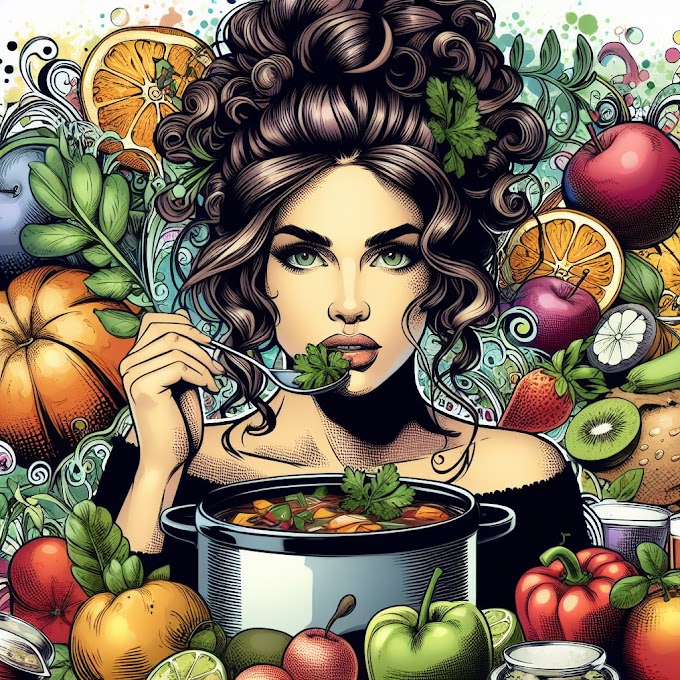Cooking Tips: Braising Meats for Tenderness and Flavor
Braising is a timeless culinary technique that transforms tough cuts of meat into tender, flavorful dishes that can become the centerpiece of any meal. Whether you're cooking for a special occasion or simply looking to elevate your dinner routine, mastering the art of braising can be a game-changer in the kitchen. Below, I’ll walk you through the essentials of braising meats, followed by some practical tips to ensure your dishes are always a success.
What is Braising?
Braising is a combination cooking method that uses both wet and dry heat. It typically involves first searing the meat at a high temperature to develop a rich crust, followed by slow cooking it in a covered pot with a small amount of liquid. The meat is usually cooked at a low temperature over a long period, which allows it to become incredibly tender while absorbing the flavors of the liquid and any accompanying aromatics.
Choosing the Right Meat
Not all meats are suitable for braising. The best cuts for this method are those that are tougher and contain more connective tissue, such as chuck roast, short ribs, brisket, or pork shoulder. These cuts benefit from the slow, moist cooking process, which breaks down the collagen and turns the meat into a melt-in-your-mouth masterpiece.
The Braising Process
1. Seasoning and Searing: Start by seasoning your meat generously with salt and pepper. Then, heat a small amount of oil in a heavy-bottomed pot, such as a Dutch oven, over medium-high heat. Sear the meat on all sides until it develops a deep, brown crust. This step is crucial as it creates a foundation of flavor for the entire dish.
2. Deglazing: After searing the meat, remove it from the pot and set it aside. You'll likely notice brown bits stuck to the bottom of the pot—these are packed with flavor. To release them, pour in a small amount of liquid (such as wine, broth, or even water) and scrape the bottom of the pot with a wooden spoon. This process is known as deglazing and it adds depth to your braising liquid.
3. Braising: Return the seared meat to the pot along with your chosen liquid, which should come about halfway up the sides of the meat. You can use a variety of liquids for braising, including stock, wine, beer, or even tomato sauce, depending on the flavor profile you're aiming for. Add aromatics like onions, garlic, herbs, and spices to the pot as well. Cover the pot with a lid and transfer it to a low-temperature oven (around 300°F) or simmer gently on the stovetop. Cook for several hours until the meat is fork-tender.
4. Finishing Touches: Once the meat is tender, you can either serve it as is or take a few extra steps to enhance the dish. For example, you might reduce the braising liquid to concentrate its flavors, or add a splash of vinegar or citrus juice to brighten the dish.
Tips for Successful Braising
- Don’t Rush the Searing: Take your time when searing the meat. A well-browned exterior is key to developing a robust flavor in your final dish.
- Use the Right Pot: A heavy-bottomed pot like a Dutch oven is ideal for braising because it retains and evenly distributes heat. This ensures that the meat cooks slowly and consistently.
- Low and Slow is the Way to Go: Braising is a method that requires patience. Cooking at a low temperature for an extended period allows the tough meat to break down and become tender.
- Keep an Eye on the Liquid: Make sure there’s enough liquid in the pot to prevent the meat from drying out, but not so much that it completely submerges the meat. The goal is to cook the meat in a moist environment, not to boil it.
- Rest Before Serving: After braising, let the meat rest in the braising liquid for a short while before serving. This allows the flavors to meld and the meat to reabsorb some of the juices.
Braising is more than just a cooking technique—it’s a way to turn humble ingredients into something extraordinary. With these tips in hand, you’re well on your way to mastering the art of braising, creating dishes that are as tender as they are flavorful. So the next time you’re looking to impress, consider braising—it’s a surefire way to make any meal memorable.
















